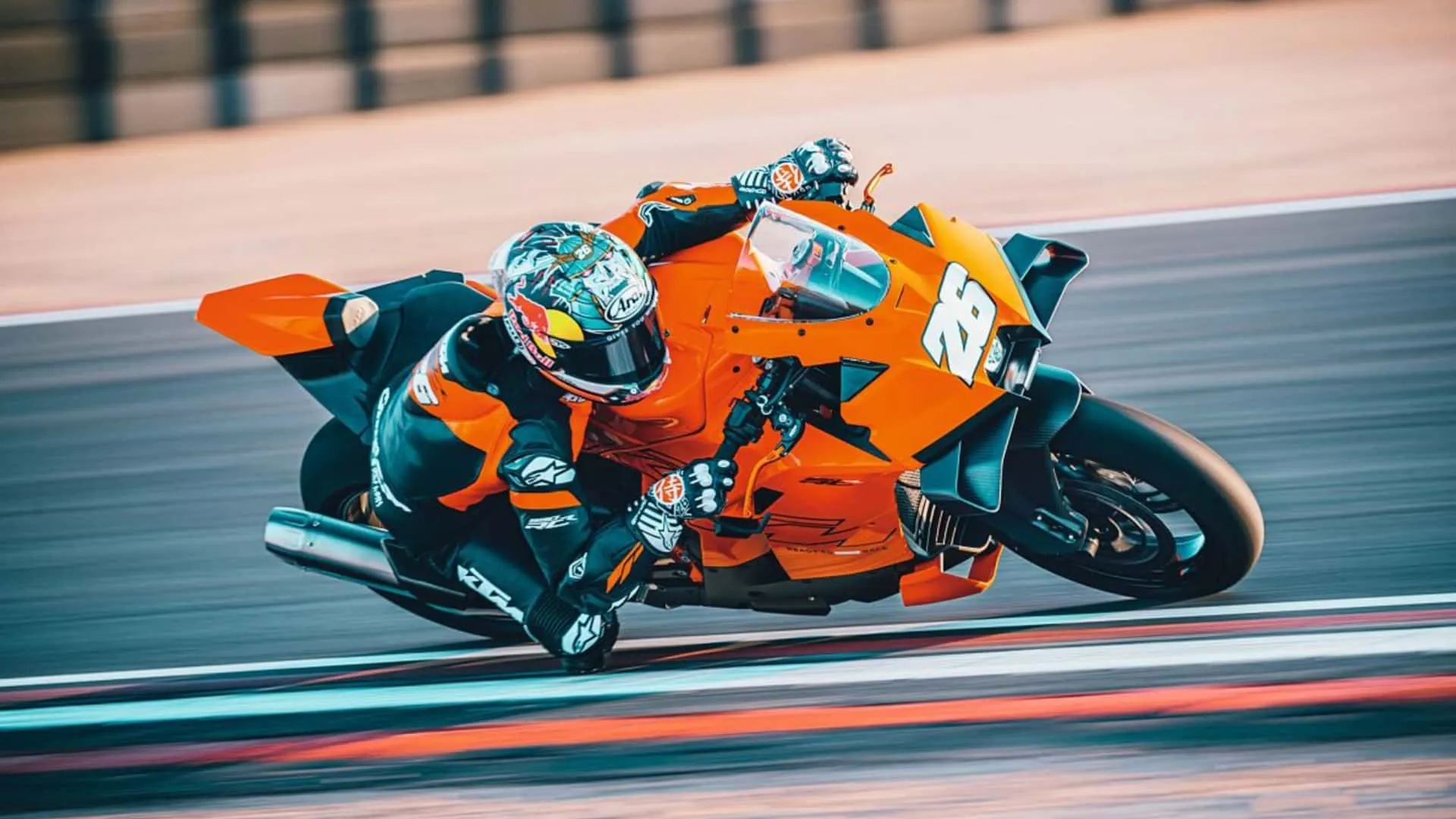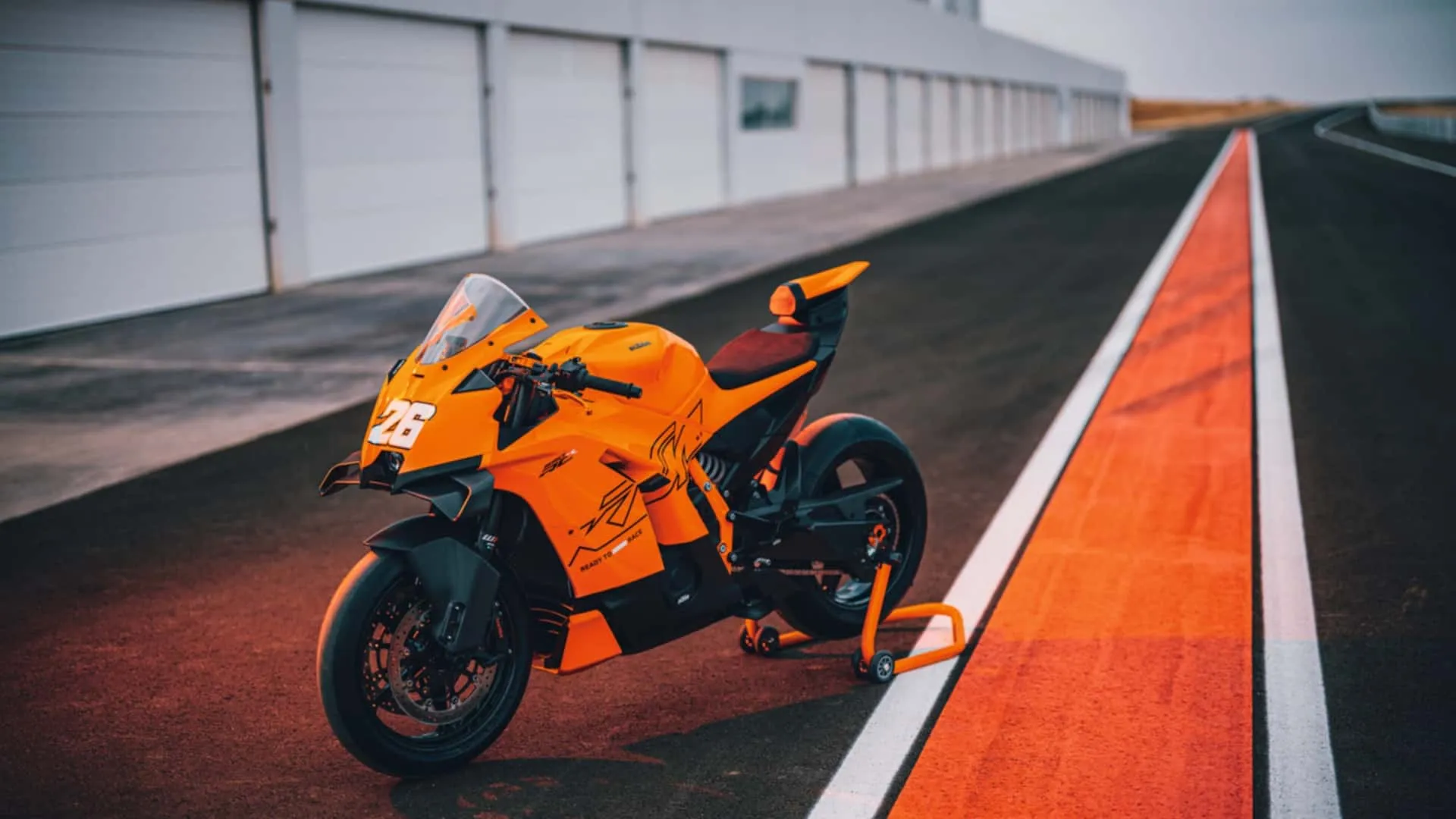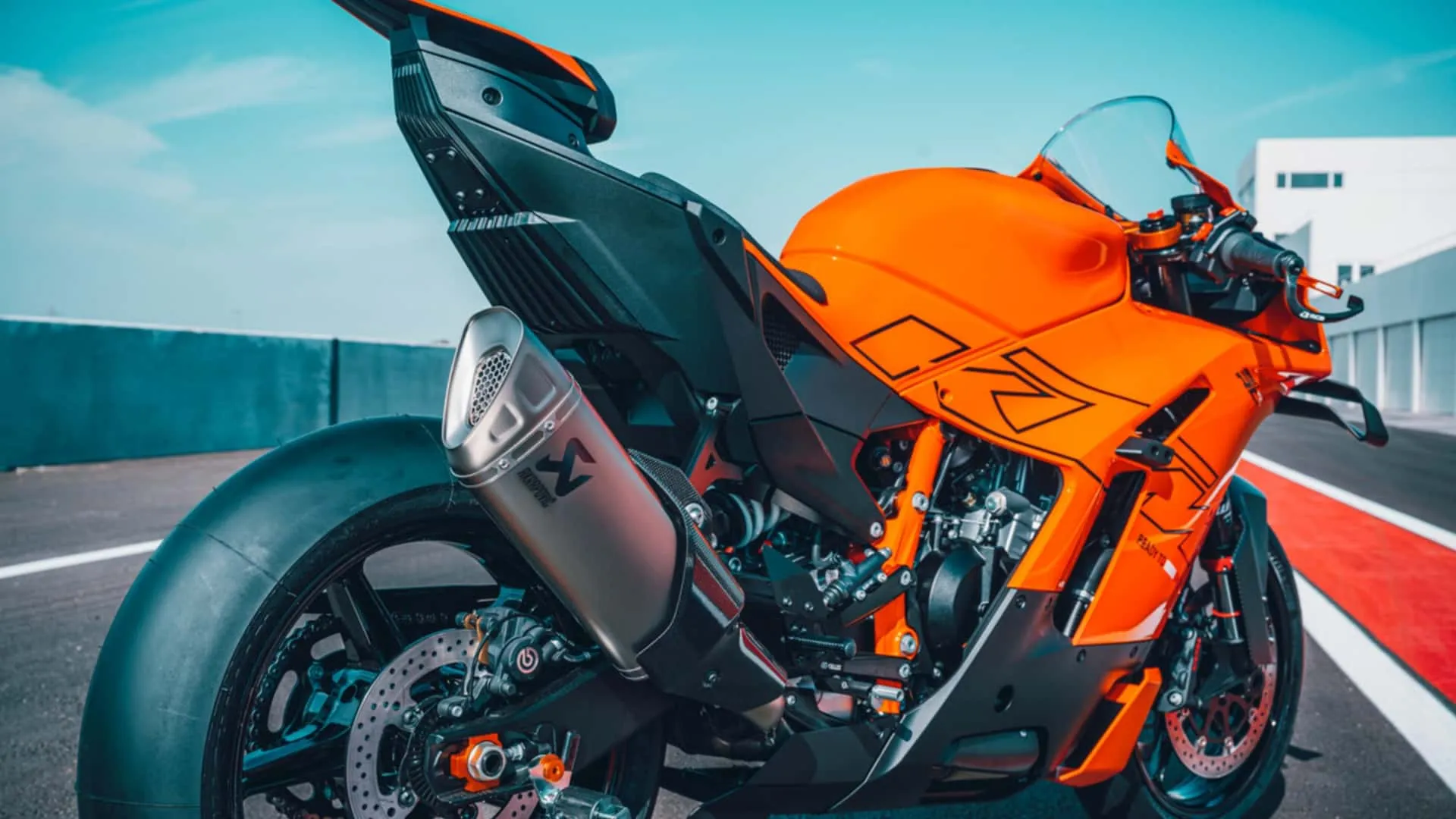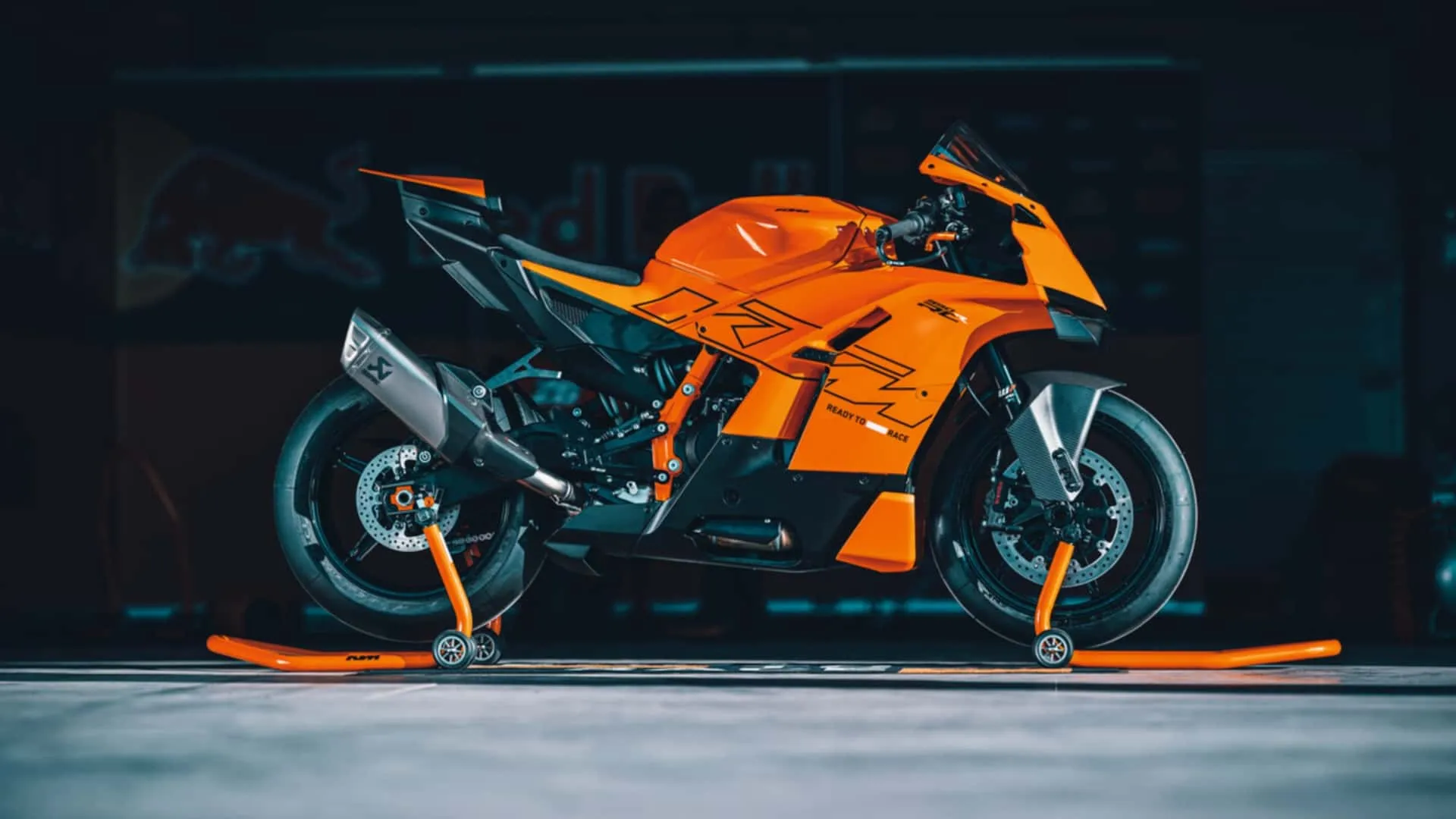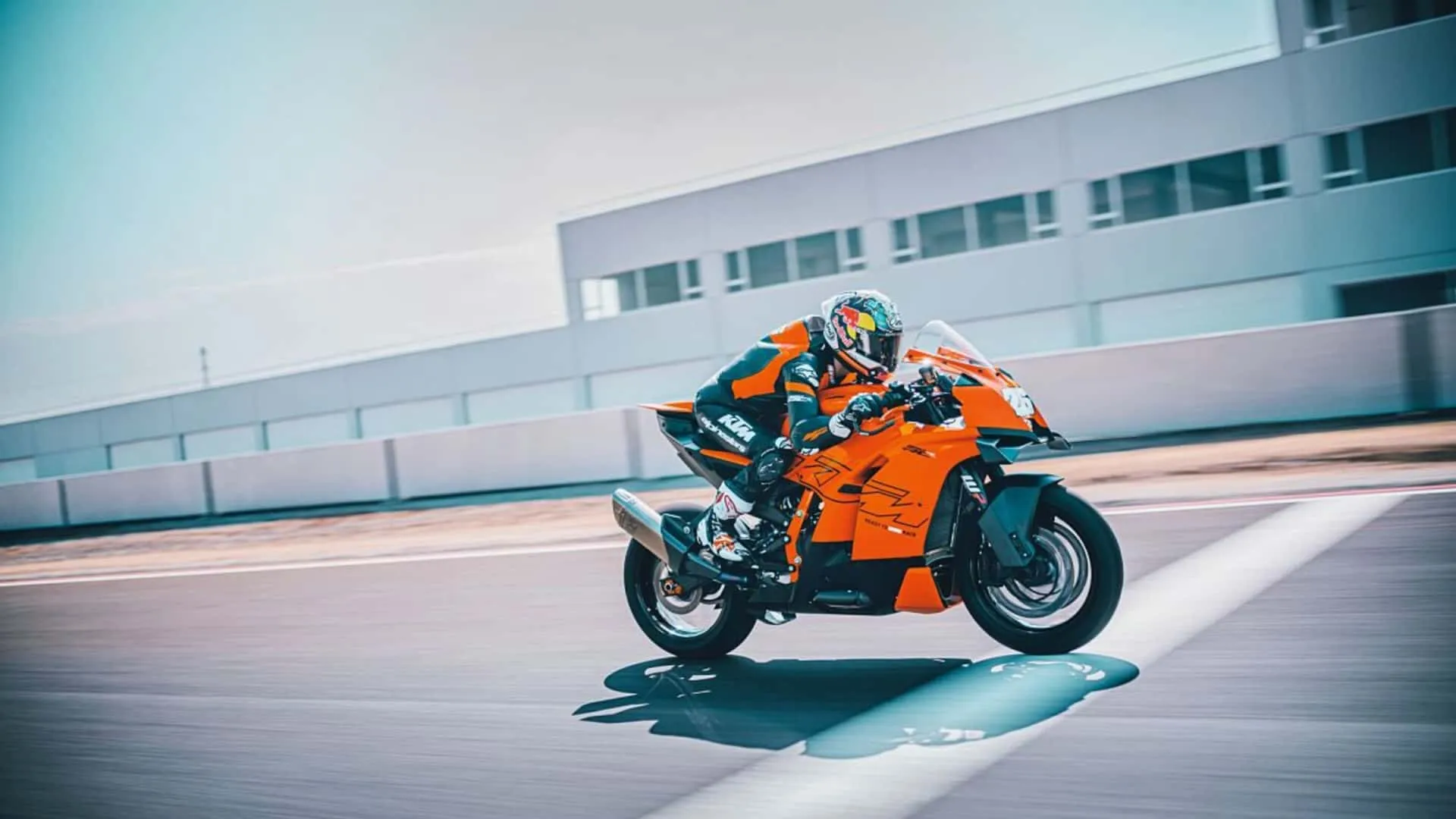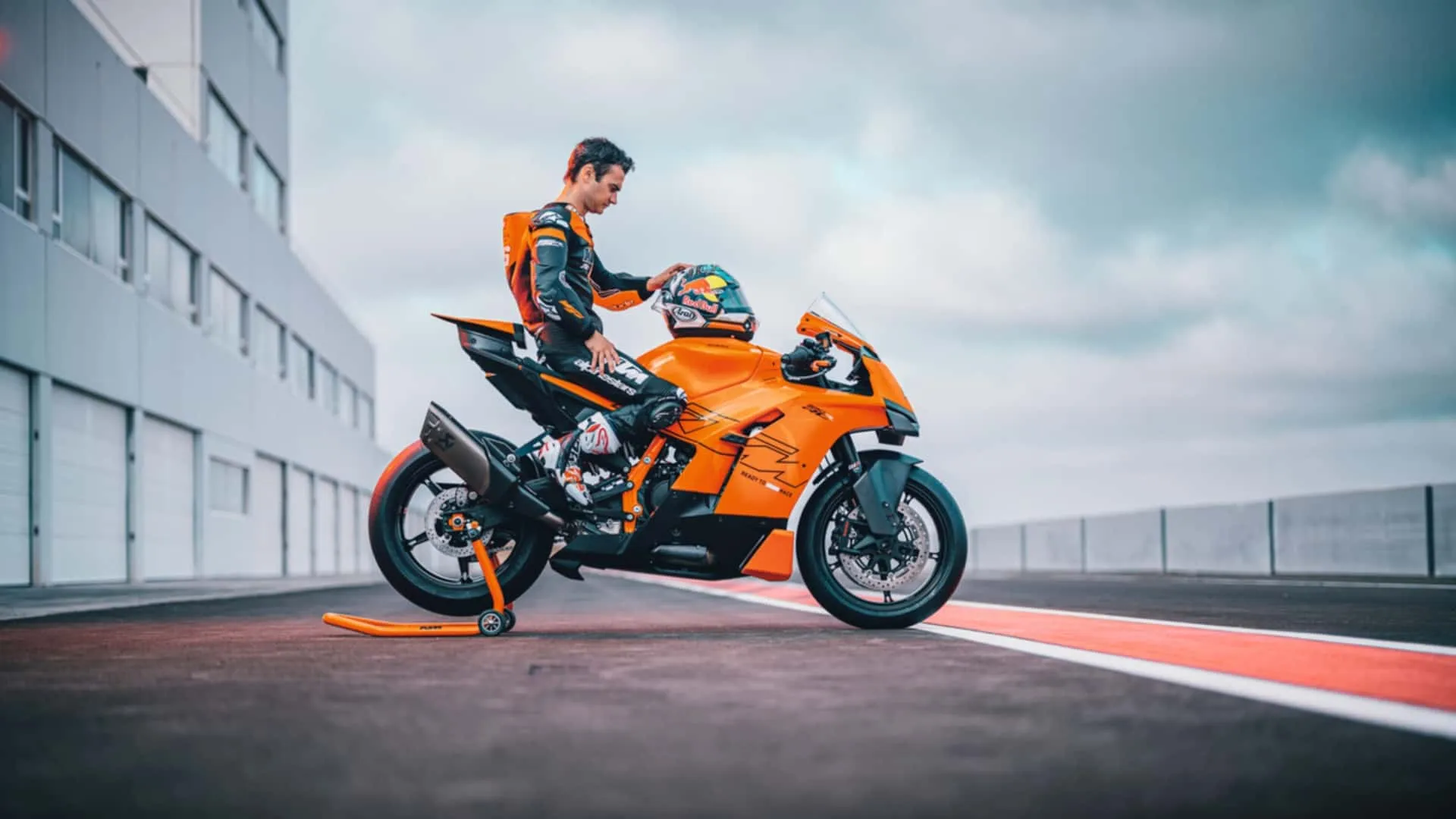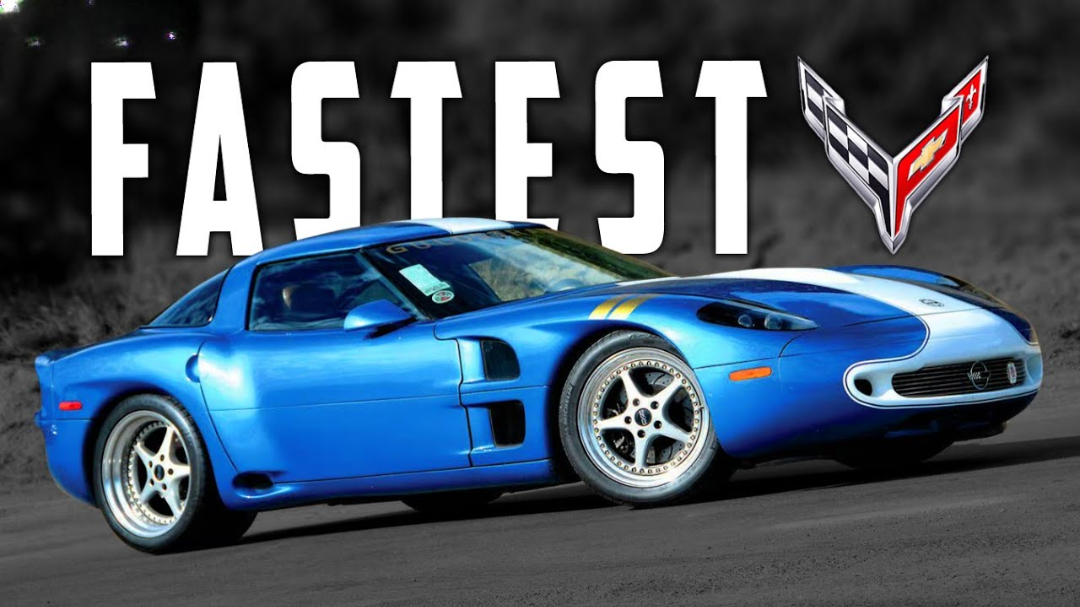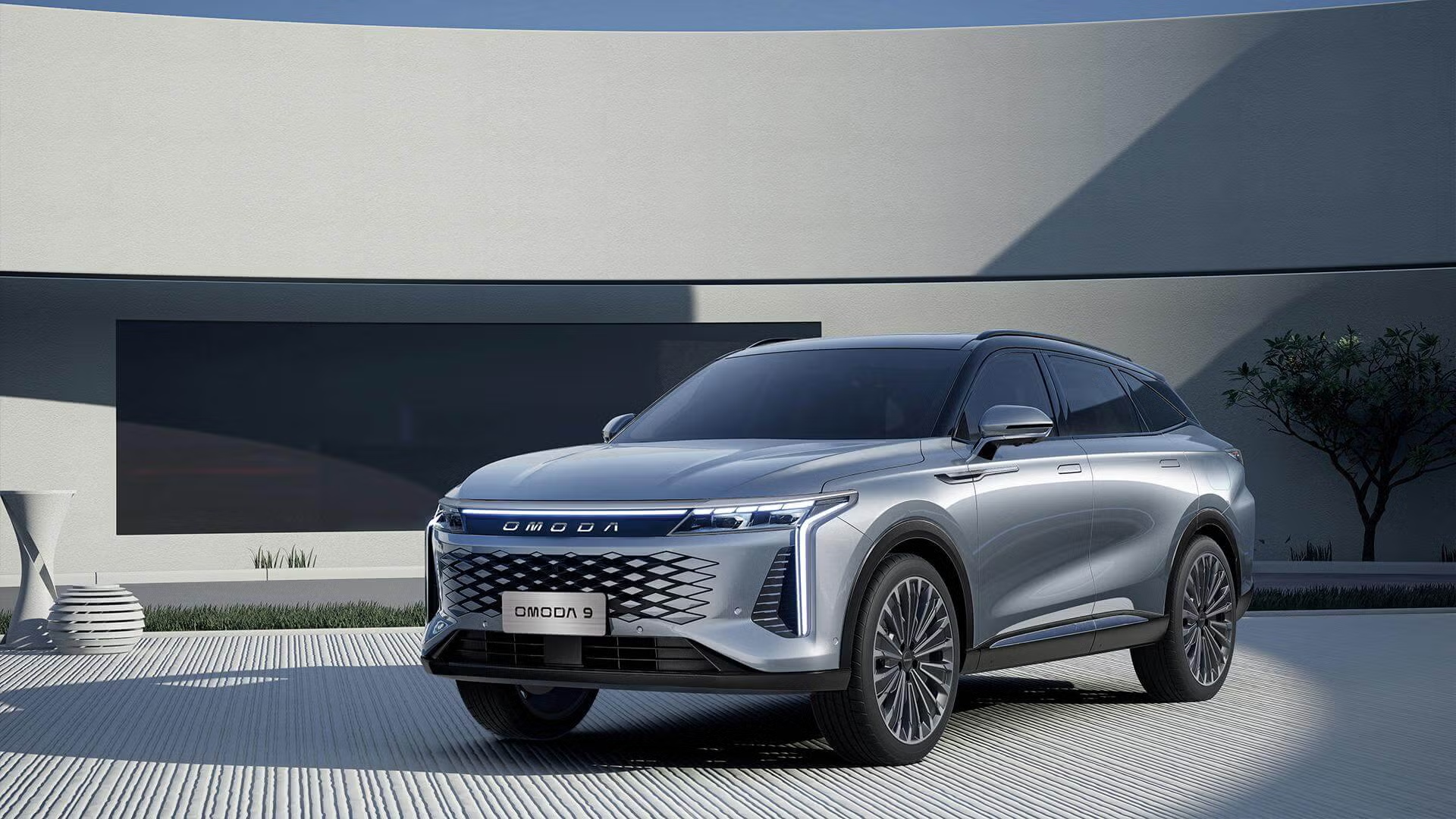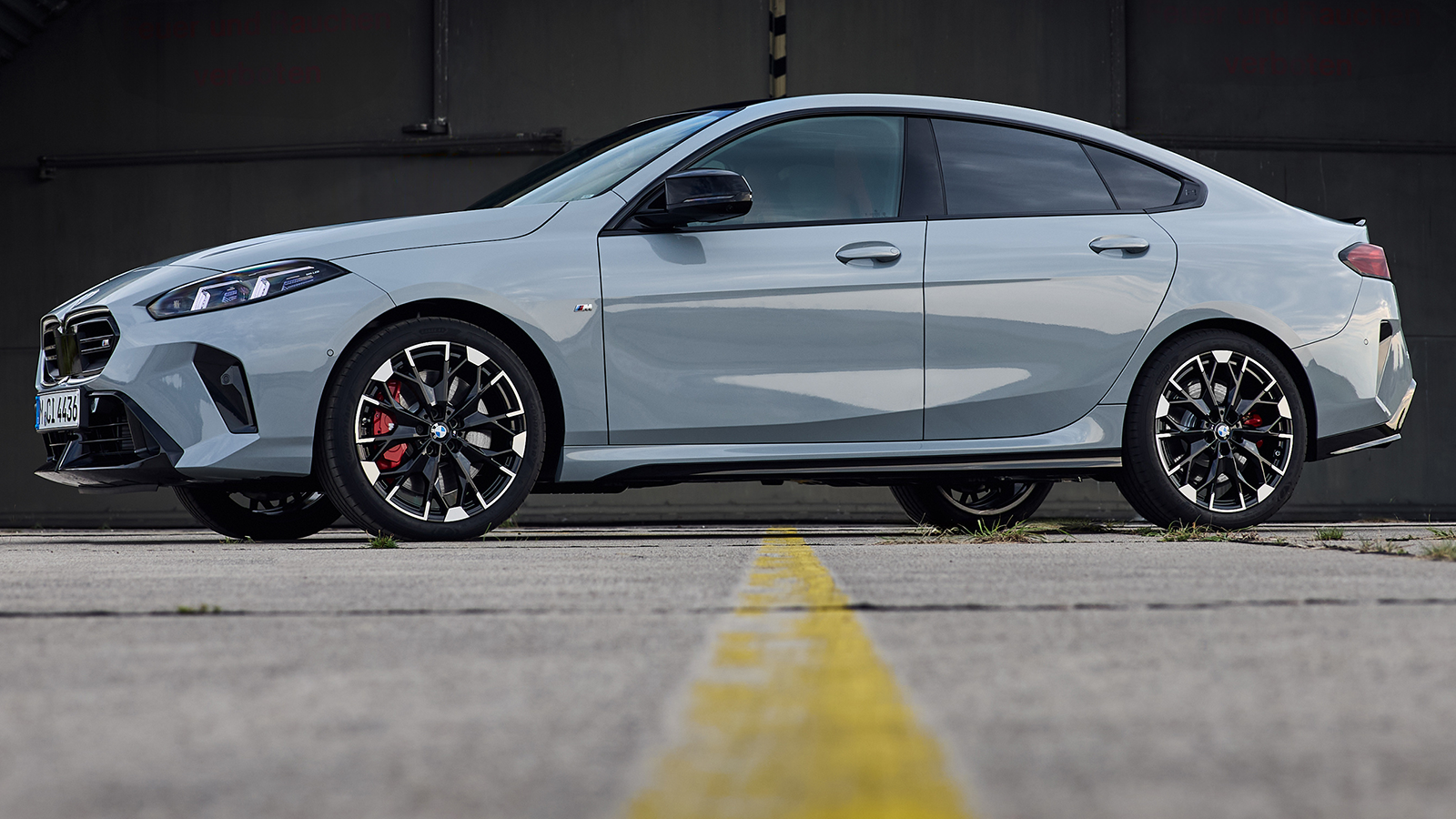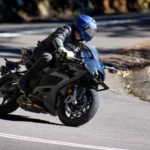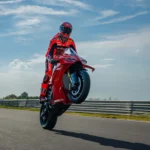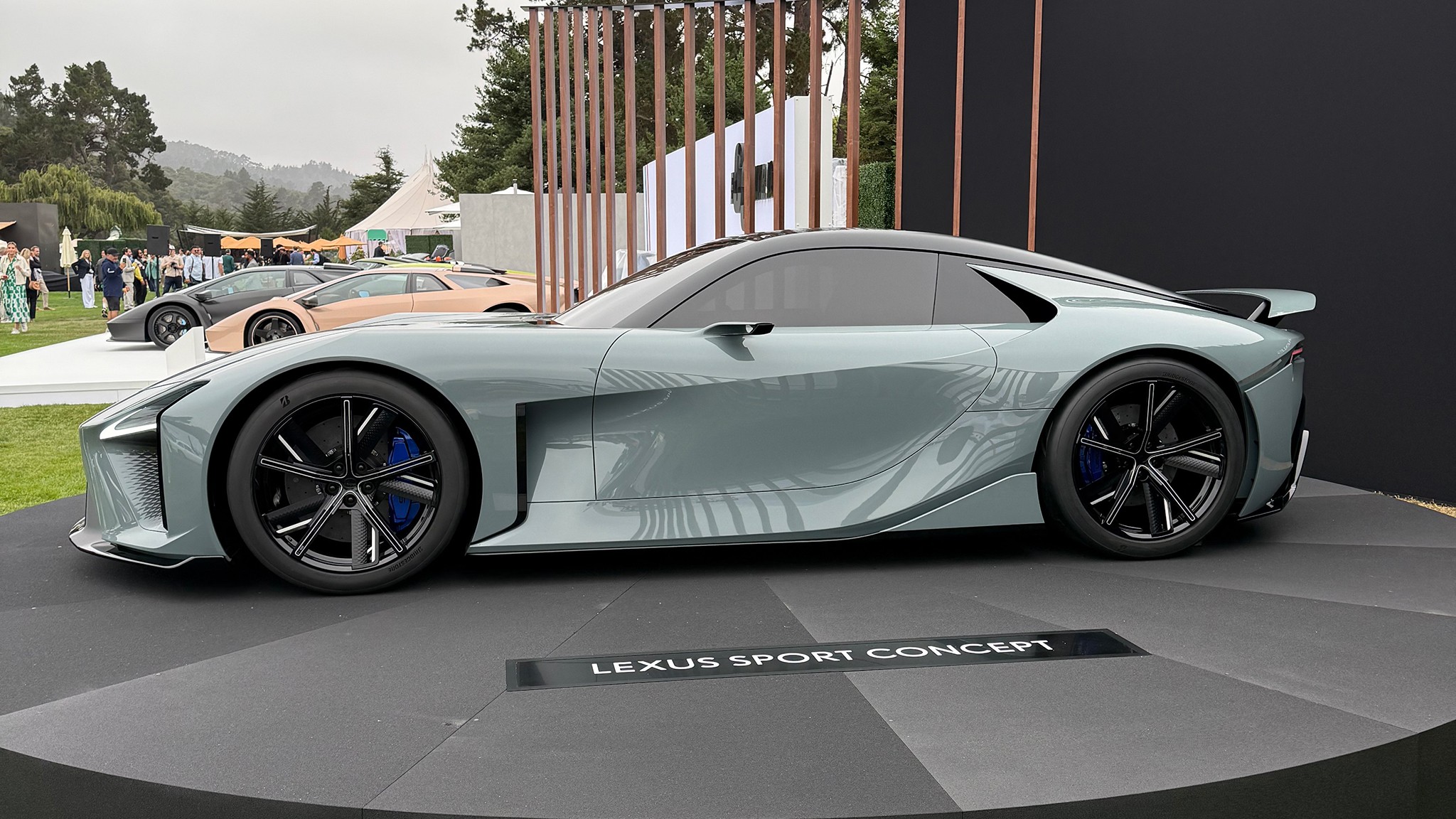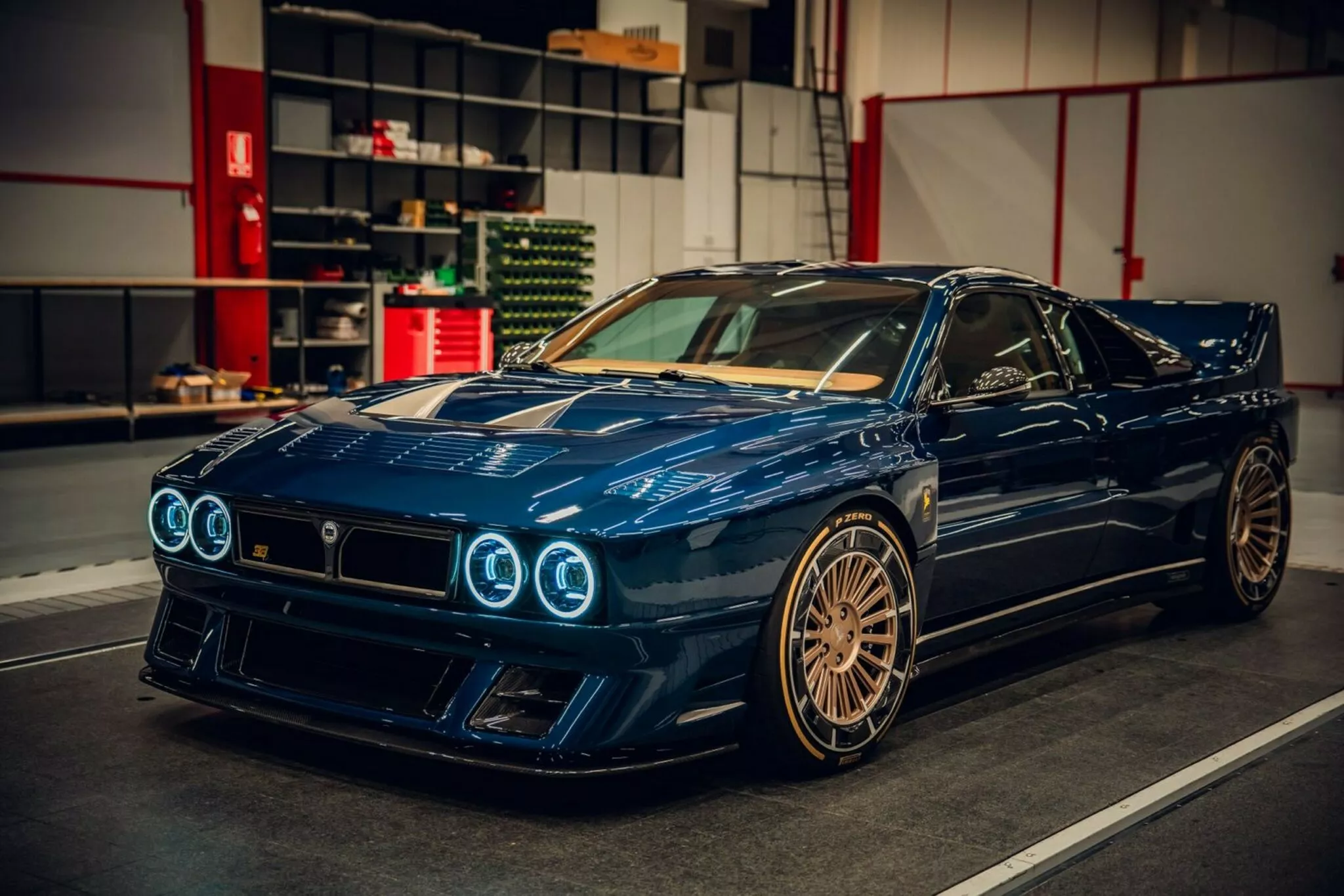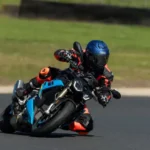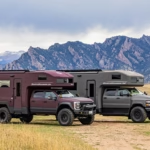The 2026 KTM 990 RC R: How Austria’s Superbike Gamble Could Rewrite the Rulebook
KTM just pulled the sheet off something nobody saw coming. After years of financial chaos, factory shutdowns, and whispered rumors about bankruptcy, the Austrian manufacturer walked into EICMA week and dropped the 2026 KTM 990 RC R—a full-blown supersport that signals either a bold comeback or a desperate last throw of the dice. Either way, it’s got people talking.
This isn’t some half-hearted “we’re still here” publicity stunt. The 990 RC R packs 130 horsepower from a seriously lightened parallel-twin engine, wears aerodynamic bodywork tested in the same wind tunnels as KTM’s MotoGP machines, and carries enough electronic wizardry to embarrass bikes costing twice as much. At $13,949, it’s priced to start fights in dealerships.
But here’s the real story: this bike represents way more than another model launch. It’s KTM’s declaration that they’ve survived the worst financial storm in company history, thanks to a controversial rescue from Indian partner Bajaj Auto. The 990 RC R is either proof that KTM’s back on solid ground, or the most expensive distraction from problems that haven’t actually been solved.
When Things Got Really Bad
Let’s talk about what happened to KTM, because you can’t understand this bike without understanding where it came from. By late 2024, KTM AG was drowning in over €2 billion of debt. The company had bet big on post-pandemic demand that never materialized, bought brands like MV Agusta and Husqvarna that became millstones around their neck, and spent €70 million annually on motorsports programs while dealerships sat with unsold inventory gathering dust.
The situation got so bad that in November 2024, KTM filed for court-supervised restructuring in Austria—basically one step away from full bankruptcy. Production stopped. Workers got laid off. Suppliers started demanding cash upfront. The parent company, Pierer Mobility AG, posted a €1.28 billion loss before tax and watched revenue crater by 29%.
Then came the May 23, 2025 deadline. Austrian courts approved a restructuring plan that required KTM to deposit €548 million with insolvency administrators or face liquidation. That’s when Bajaj Auto, KTM’s partner since 2007, made a move that raised eyebrows across the industry.
Bajaj’s Dutch subsidiary secured a €566 million loan from JPMorgan Chase, DBS Bank, and Citigroup. Officially, the loan was described as being for “investments,” with no mention of KTM anywhere in the filing. But given the timing and the amount—which conveniently exceeded KTM’s restructuring requirement—everyone knew where that money was headed.
By May 2025, Bajaj had committed over €800 million total to the KTM rescue, representing nearly 47% of Bajaj’s entire FY25 net cash position. In return, Bajaj moved from minority partner to majority controller, taking active control over KTM’s operations and strategy. For Bajaj, this was either the ultimate vote of confidence in KTM’s brand value, or the world’s most expensive case of throwing good money after bad.
The Engine: Where 56 Kilograms Makes All the Difference
The 990 RC R’s heart is the LC8c parallel-twin engine, a powerplant that’s been KTM’s workhorse for years but received serious modifications for this application. Engineers put this motor on a diet, shaving weight down to just 56 kilograms—remarkably light for a 947cc twin-cylinder engine.
The configuration is a 120-degree parallel-twin with dual overhead cams and four valves per cylinder. Bore and stroke measure 92.5mm x 70.4mm, with a compression ratio of 13.5:1. KTM fitted a Bosch EMS (Engine Management System) with ride-by-wire throttle control, along with a new exhaust system and airbox specifically tuned for the RC R.
Output hits 130 PS (128 horsepower) at 9,500 rpm, with 103 Nm (76 lb-ft) of torque arriving at 6,750 rpm. The redline sits at 11,000 rpm, which is seriously high for a big parallel-twin. For comparison, the KTM RC 8C track bike—using an 889cc version of the same engine family—made 135 horsepower at 11,000 rpm, so the 990 RC R isn’t far behind despite being a street-legal machine.
Power flows through a 6-speed gearbox with a quickshifter available as part of the optional Tech Pack. KTM uses a multiplate wet clutch with anti-hopping function, and final drive is via a 520 X-ring chain.
The LC8c family has interesting heritage. KTM’s original LC8 V-twin powered everything from Super Dukes to Adventure bikes for over twenty years, producing figures north of 180 horsepower in its most potent forms. The LC8c parallel-twin variant maintains that philosophy of compact dimensions and high output while meeting Euro 5+ emissions standards.
What makes this engine special isn’t just the numbers—it’s the usability. KTM claims the 990 RC R delivers “instant punch in any gear,” with the parallel-twin configuration providing stronger low-end and midrange torque than inline-four competitors. One reviewer who rode the bike on track noted: “The engine doesn’t feel peaky or laggy. Throttle response is immediate, and it pulls hard from 4,000 rpm all the way to the limiter”.
Chassis: Steel Frame With Track DNA
KTM built a custom chromium-molybdenum steel trellis frame specifically for the 990 RC R, using the engine as a stressed member. This represents a departure from the aluminum perimeter frames common on Japanese supersports, but it’s classic KTM philosophy—steel provides precise flex characteristics and crash durability while keeping weight reasonable.
The rear subframe is die-cast aluminum, powder-coated and designed to support both rider and pillion. Compared to the naked 990 Duke (which shares the same engine), KTM gave the RC R greater frame rigidity for improved stability under hard acceleration and high-speed cornering. This rigidity is counterbalanced by a more flexible cast aluminum swingarm connected to the monoshock via a linkage system.
Geometry numbers show KTM’s track intentions clearly. The steering head angle sits at 65.8 degrees with 98.5mm of trail. Wheelbase measures 1,481mm (58.3 inches)—compact enough for quick direction changes without being twitchy. Ground clearance is 163mm, and seat height sits at 845mm (33.2 inches), which is reasonably accessible considering the bike’s performance mission.
Wheels are cast aluminum units borrowed from the KTM 1390 Super Duke R Evo: 3.5 x 17 inches up front, 5.5 x 17 inches at the rear. KTM spec’d Michelin Power Cup 2 tires as standard equipment—serious rubber that straddles the line between street legality and track performance.
Suspension comes from WP, KTM’s longtime partner and subsidiary. Up front: WP APEX 48mm open cartridge fully-adjustable inverted forks with 130mm (147mm according to some sources) of travel. Adjustments include compression damping (30 clicks), rebound (30 clicks), and preload (±3 clicks).
Out back: WP APEX monoshock with linkage, offering 130mm (134mm) of travel. The rear shock provides comprehensive adjustability: low-speed compression (30 clicks), high-speed compression (3 turns), rebound (30 clicks), and preload (10 turns). This level of adjustability lets riders fine-tune the chassis for everything from bumpy backroads to glass-smooth racetracks.
Brakes and Electronics: Where KTM Spent the Money
Brembo supplies the braking system, specifically the HyPure lineup with radially-mounted four-piston calipers up front. Those calipers clamp dual 320mm floating discs finished in black anodized coating with red Brembo logos. Out back sits a single-piston caliper acting on a 240mm disc.
The ABS system isn’t your basic on/off setup. KTM fitted a six-axis inertial measurement unit (IMU) that enables cornering-sensitive braking intervention. There are four ABS modes to choose from: Street (full intervention for road use), Sport (later intervention with less rear wheel lift mitigation), Supermoto+ (allows rear wheel locking for limited duration), and Supermoto (minimal intervention).
The electronics package is where the 990 RC R really shows KTM’s MotoGP influence. The six-axis IMU feeds data to the ECU controlling cornering traction control, anti-wheelie, motor slip regulation (rear wheel slide control), and launch control.
Four riding modes come standard: Rain, Street, Sport, and Custom. Each mode alters throttle response, traction control sensitivity, ABS intervention level, and engine braking character. The Custom mode lets riders mix and match settings to create their preferred configuration.
Want more? The optional Track Pack unlocks serious capabilities. You get dedicated Track mode, two additional Custom Track modes, five-level adjustable anti-wheelie control, launch control with selectable intervention levels, adjustable throttle response maps, fully customizable traction control, plus a telemetry screen showing lean angle, throttle position, G-forces, and lap timing data.
Add the Tech Pack and you get everything from the Track Pack plus cruise control, motor slip regulation, and an adaptive brake light that flashes under hard deceleration.
All this information displays on an 8.8-inch TFT touchscreen coated with anti-reflection, anti-fingerprint, and anti-glare treatments. The screen offers 256 colors and split-screen capability. A handlebar-mounted switch cube and joystick control screen functions, and the system integrates with the KTM Connect smartphone app for navigation, music control, and advanced telemetry viewing.
One early tester noted: “The dash is shockingly good. KTM’s displays have always been functional but basic. This thing has built-in navigation, can mirror your phone, and the touchscreen actually works while wearing gloves. Nobody expected this”.
Ergonomics: Making 130 Horsepower Livable
Here’s where KTM claims they’ve cracked something other supersports struggle with—making a track weapon comfortable enough for regular street use. The company talks about a “six-point contact patch” between rider and machine, with carefully shaped tank contours that support the knees, arms, and hands.
The clip-on handlebars are aluminum and mounted to adjustable triple clamps. Footpegs are also adjustable: the standard “street” position can be moved 25mm rearward and 17mm higher for a more aggressive “track” posture with increased lean angle clearance.
KTM claims the riding position is engaged but not extreme—more sport-touring than full race crouch. The fairing provides decent wind protection, directing airflow away from the rider’s torso to reduce fatigue during highway speeds. Heat management reportedly improves on older big twins, with targeted ducting and careful radiator positioning keeping things tolerable in traffic.
The fuel tank holds 15.7 liters (4.2 gallons), which should provide decent range given the twin-cylinder’s relative efficiency compared to thirstier four-cylinder rivals. Dry weight is listed at 184 kg (405 lbs), with ready-to-ride weight including a full tank at 195 kg (429.9 lbs). That’s competitive with middleweight supersports despite the larger displacement.
The RC8 Shadow: What Happened Last Time
To understand why people are cautious about the 990 RC R despite all its impressive specs, you need to know about the KTM RC8—the bike that tried this exact same thing fifteen years ago and failed spectacularly.
The original RC8 debuted in 2008 with a 1,148cc V-twin making around 155 horsepower. KTM positioned it as their first-ever superbike, complete with cutting-edge WP suspension, an aggressive steel trellis frame, and that distinctive KTM orange paint scheme. The improved RC8R arrived in 2009 with 1,195cc, titanium valves, DLC-coated cam followers, and power bumped to 175+ horsepower.
On paper, the RC8 looked like a winner. In reality, three factors killed it. First: the sudden death of one of KTM’s chief engineers on September 2, 2006, which devastated the development team and delayed the project. Second: the 2008 global financial crisis hit right as the RC8 entered production, cratering demand for expensive toys. Third: the superbike market consolidated brutally during that period, shrinking from eight or nine manufacturers down to five almost overnight.
KTM representatives admitted at a 2016 MotoGP event that the RC8 “wasn’t a major hit,” selling only about 9,000 units over six production years. Development and yearly update costs never justified the sales numbers. Ironically, once production ceased in 2013-2015 (depending on market), demand surged and suddenly everyone wanted one—but by then KTM had already redirected their focus to the Super Duke naked bike line.
The RC8’s chassis technology didn’t die, though. In 2020, KTM incorporated RC8R frame design elements into the 1290 Super Duke R, creating what many consider one of the finest naked bikes available. So the RC8 lived on in spirit, even if the superbike itself became a cautionary tale about ambitious projects meeting bad timing.
The 990 RC R Track Edition: Going Even Harder
KTM isn’t stopping with the road-legal version. A dedicated 990 RC R Track edition is scheduled for February 2026. This version strips out everything unnecessary for street use—mirrors, lights, license plate holder—and loads up with race-specific hardware.
Details remain scarce, but expect lighter wheels, race-spec suspension tuning, slick tire compatibility, and possibly power increases via unrestricted exhaust and ECU mapping. This is KTM’s direct nod to the old RC8R, which competed in various production-based racing series before the superbike program folded.
The Track edition also represents KTM testing the waters for customer racing programs. If demand materializes, they could develop a full race support package similar to what brands like Ducati and BMW offer for their V4 R and M 1000 RR track bikes.
What This Means for KTM’s Future
So here’s the big question: is the 990 RC R proof that KTM has actually stabilized, or is it a distraction from ongoing financial problems?
The optimistic view: KTM successfully restructured, eliminated approximately €1.3 billion in debt through the insolvency process, secured long-term financing from Bajaj, and restarted production in Austria. The 990 RC R proves they still have the engineering talent and manufacturing capability to develop genuinely competitive motorcycles. At $13,949, the bike offers serious value in the supersport segment, potentially attracting buyers who might have otherwise chosen Japanese alternatives.
The skeptical view: Bajaj essentially owns KTM now after committing nearly half their annual net cash to the rescue. Stefan Pierer, KTM’s CEO who masterminded the aggressive expansion strategy that nearly sank the company, remains in control of operations. The underlying problems—dealer inventory overhangs, post-pandemic demand weakness, high European production costs—haven’t been solved, just temporarily papered over with Bajaj’s money.
Analysts remain cautious. Several flashed sell ratings on Bajaj Auto stock following the KTM rescue announcement, questioning whether the investment will ever generate acceptable returns. The concern is that Bajaj might find itself pouring money into a fundamentally troubled business that requires constant life support.
For everyday riders, though, these financial concerns might not matter much. If the 990 RC R delivers on its performance promises and KTM can actually manufacture and deliver the bikes reliably, it could become a genuine success story regardless of balance sheet drama.
Production started in late October 2025, with bikes hitting authorized KTM dealers during the first quarter of 2026. Early reviews from the Spanish launch event were overwhelmingly positive, with testers praising the bike’s approachable character, strong midrange punch, and surprisingly refined electronics package.
How It Stacks Against Competition
At 947cc and 130 horsepower, the 990 RC R slots into an interesting middle ground. It’s bigger than traditional 600-650cc supersports like the Yamaha R7, Kawasaki Ninja 650, or Aprilia RS 660, but smaller than liter-class monsters like the BMW S 1000 RR or Yamaha R1.
The closest direct competitor is probably the Ducati SuperSport 950, which uses a 937cc V-twin making 110 horsepower. The KTM offers more power, more electronics, and a lower price point. The Triumph Daytona 660 (80 horsepower from a 660cc triple) and Kawasaki Ninja ZX-6R (130 horsepower from a 636cc four) represent alternatives with different engine philosophies.
Where the 990 RC R might win is usability. Parallel-twin engines deliver smoother power output and reduced vibrations compared to singles, while offering better low-end torque than four-cylinders. The 990’s midrange punch should make it more forgiving on tight, technical roads compared to revvy fours that need high RPM to make power.
Maintenance and reliability should also favor the twin. Fewer moving parts, simpler valvetrain, longer service intervals—parallel-twins generally cost less to own and maintain than complex multi-cylinder alternatives. That matters when you’re actually living with the bike rather than just bench-racing specs.
